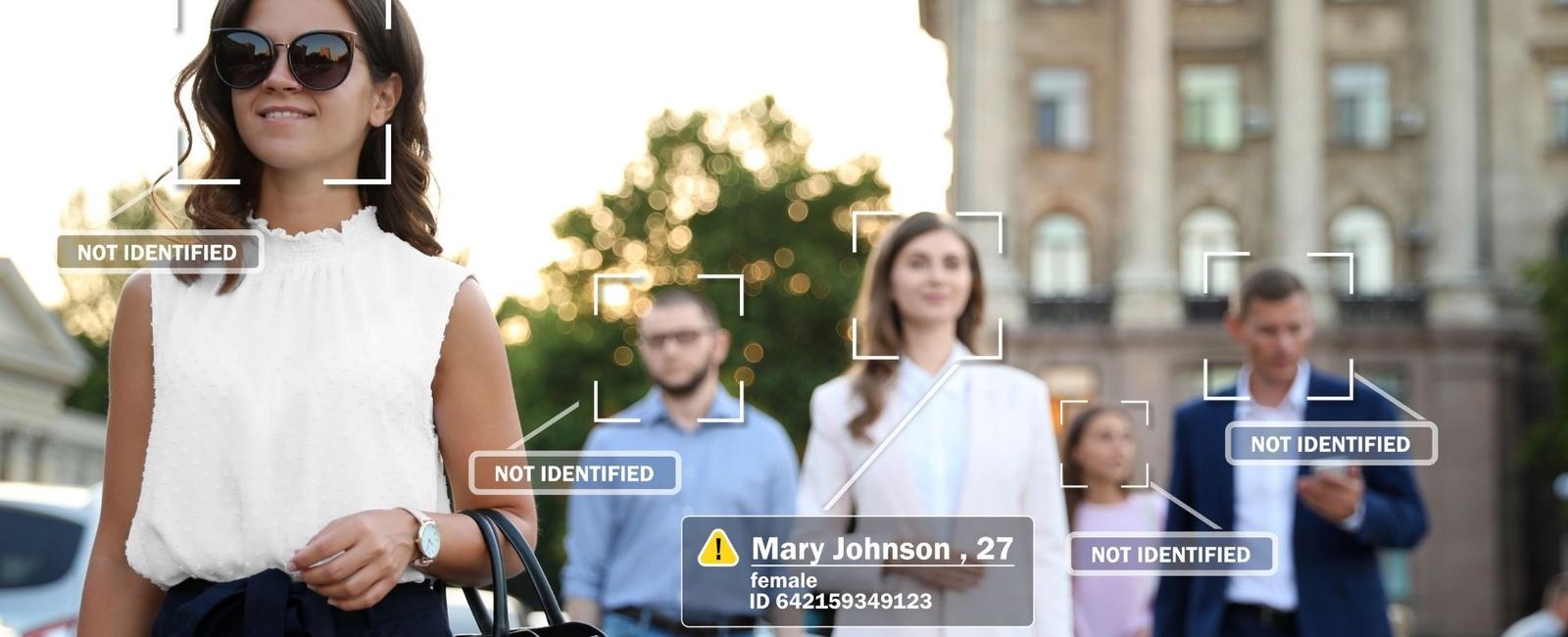Exploring Human Detection in Surveillance | Unveiling Seven Fields That Rely on It

Explore the seven fields requiring human detection in surveillance. Expand your knowledge of surveillance and detect your needs with Co-one!
In today’s society, security and privacy are paramount in every aspect of life. So, what is the role of human detection in surveillance at this point? Let’s look at where and why this technology is needed.
First, we will emphasize the extensive application of human detection surveillance in various settings, highlighting its significance in increasing safety efficiency and broadening our understanding of human nature.
Next, we will provide information about our company by answering any queries you may have about the requirements of your business. On surveillance technology, our professional company, Co-one, is ushering in a new era of security by integrating human detection, queue analysis, and other technologies to promote efficiency and data-driven decision-making for your business. Consequently, we’ll focus on how Co-one’s new services and products alter the game in seven crucial industries.
Let’s get started.
Why is Human Detection in Surveillance Important?
Human detection is pivotal for surveillance, bolstering security in airports, factories, and public areas. Such advanced technology solutions ensure accurate statistics collection and annotation essential for foremost AI performance.
Accurate people-counting aids resource allocation, even as traveler evaluation optimizes layouts. These analytics are helpful for threat reduction, disaster preparedness, and pleasing space use.
Human tracking tech ensures safety and informed selections in today’s interconnected world—for instance, the Co-one data management platform empowers AI algorithms, enabling reliable human monitoring and surveillance efficiency. Which companies need this technology the most and why?
The following are the seven sectors that gain the most from human detection in surveillance.
1. Airports
Precision in airport people-counting is crucial in the intricate network of airports. This innovative solution revolutionizes crowd management and resource allocation. It offers this by meticulously counting and tracking individuals across all airport terminals. So how does it help?

Boosts better passenger flow through terminals and gates
Airport people counting technologies integrate with security cameras and sensor systems, facilitating efficient inspection and offering a better flow of passengers through terminals and gates.
Helps airport authorities make better-informed decisions and changes
This real-time data empowers airport authorities to make informed decisions. The management can optimize staff deployment during peak hours or adjust security protocols based on crowd densities.
Improves passenger experience
Beyond operational enhancements, the benefits extend to passenger experiences.
Delays and congestion become a thing of the past as queues since your staff strategically manage them, which saves time and, most importantly, reduces stress and enhances traveler satisfaction.
On the other hand, Co-one’s human detection technology elevates airports into seamless, secure, and passenger-friendly terminals.
2. Manufacturing Industries
Second on the list, we have manufacturing industries where safety is always prioritized. Here is how human monitoring applications help in this sector:
Helps staff and equipment safety
Factory safety monitoring fosters a safety culture. It does this by providing real-time tracking of employee and equipment movements. Product lanes may also have security cameras linked to the system. First, this surveillance ensures the smooth sailing of the products. Secondly, this minimizes risks of avoidable machine damage and safeguards the well-being of workers.
Offers better factory safety monitoring
Human detection technology is easily implemented in manufacturing settings, where it monitors and reports workers’ actions in real time. In the event of unauthorized access to hazardous areas or breaches of safety protocols, instant alerts are triggered. The factory safety monitoring allows supervisors to intervene promptly and avert potential accidents.
Has better accident response
Factory human monitoring helps prevent minor accidents from becoming fatal catastrophes. Your manufacturing facility can significantly reduce accidents by monitoring traffic patterns. This surveillance can help you pinpoint unsafe zones and implement security enhancements in those areas.
Suppose your engineers or mechanics are underground or out of sight; you can have them wear wearable devices interacting with the system. These may further enhance their safety by receiving alerts about potential hazards. And if they are in trouble, you can get help promptly.
3. Entertainment Industry
Visitor detection technology offers an impressive list of accolades in the fluid dynamics of customer-centric entertainment sectors. They are:
Queue analysis
Here, human detection tech facilitates queue analysis, enabling organizations to harmonize client flow. An efficient customer flow eliminates wait times and creates unparalleled customer experiences by dissecting real-time lineups.
Co-one’s technology integrates effortlessly with existing systems to collect data on queue lengths, wait times, and client movement patterns. This data is then translated into actionable insights, allowing businesses to deploy resources optimally. You can make changes such as creating more checkout counters during busy hours or rearranging employees to streamline queues.
Boosts client experience
Beyond operational optimization, the influence on client experiences is significant.
When attending festivals or leisure spots, customers’ frustration with long wait periods fades as they move through queues quickly. Having efficient surveillance guiding your queue analysis results in increased satisfaction and loyalty.
Co-one’s human detecting technology improves queuing and choreographs a customer-centric impact that reflects efficiency, contentment, and business success.
4. Museums
In cultural institutions and exhibitions, human detecting technology offers the following:
Accurate visitor analysis
The data these security cameras collect accurately shows the number of visitors. In a location where manually counting people is challenging, such systems help. As a result, these systems offer a captivating glimpse into human behavior within these spaces.
Better event planning in the future
By meticulously dissecting visitor traffic patterns and engagement levels, Co-One may empower curators to craft immersive experiences. This data can help event planners assess a better floor plan for future events based on the visitor analysis they get from a previous event.
These insights also enable adjustments in content placements and interactive elements, creating an environment where every corner sparks intrigue and every moment fosters connection.
5. Public Spaces Management
Public spaces like malls, parks, and facilities significantly human-detecting technologies in the following ways:
Better security
In securing public spaces, advanced human detection solutions take on an augmented role. When you strategically position the security camera, you get the complete picture of what the space’s occupants are doing.
This cutting-edge technology provides impeccable security by accurately and reliably identifying individuals in off-limits zones.
Quick response to trouble
When unauthorized access is detected, or someone causes trouble, swift alerts are dispatched to authorities, which may help prevent potential security breaches and ensure an immediate response.
Public areas become safe havens where people can feel comfortable and secure by monitoring things in real time.
6. Retail and E-commerce

At the bustling crossroads of e-commerce and retail, human monitoring technology emerges as a beacon of insight. AI-Powered Retail guides retailers toward unprecedented success, and here is how it does that:
Helps with predicting customer behavior
Understanding customer behavior is essential in retail, and this technology fully facilitates this. Visitor detection seamlessly captures data on foot flow, browsing patterns, and buying behavior statistics, empowering retailers to make informed decisions that resonate with customers.
Gets a deeper grasp of customer preferences
Have you ever wondered why supermarkets and stores arrange things a certain way?
Well, one reason might be that they are using human detection for visitor detection to study customer preferences. This technology gives you insights into peak shopping hours, popular product displays, and customer movement patterns.
This data becomes a compass for retailers, directing them toward effective resource allocation and strategic marketing decisions. The result is a harmonized shopping experience that balances customer satisfaction and business profitability.
Supports personalized shopping experiences
Human monitoring technology such as Co-one’s doesn’t just stop at analysis; it becomes the backbone of personalized shopping experiences.
Once you fully understand individual shopping behaviors, you can tailor the customer experience. You can personalize promotions and product placements, forging a connection that transcends the transactional and evolves into the relational.
Customer loyalty flourishes as their needs are anticipated and met, establishing a symbiotic relationship between retailers and shoppers.
7. Smart Cities

The modern urban landscape stands at the precipice of transformation, and at the heart of this metamorphosis lies human detecting technology. Surveillance takes on new dimensions as cities evolve into intelligent, interconnected ecosystems. This transcending security advancement offers the following to smart cities:
Better logistics and city security planning
Human detection solutions have become the digital guardians of these smart cities. Traffic management becomes fluid, with sensors detecting congestion points and optimizing traffic flows in real time. Law enforcement also benefits from the swift identification of suspects, while predictive analytics enable preemptive crime prevention.
Better energy conservation
Smart cities are the hub where nature exists in harmony with human civilization. In this regard, energy-saving and eco-friendly solutions become the two ways the two worlds offer a symbiotic relationship.
Energy conservation may be augmented as lighting and HVAC systems respond intelligently to human presence. Waste management also becomes efficient, with sensors optimizing collection routes.
Meet with Co-one | The future of Surveillance
Human monitoring using security cameras and sensors display flexibility and foresight in multiple business sectors. Co-one’s technology, for example, connects goals and accomplishments in a world where security, data, and planning are paramount.
As more and more sectors find uses for human detection technology, the future looks bright, and Co-one is committed to being at the forefront of this development.
These solutions are catalysts for change, whether you use them to improve the airport experience or smart cities. Their narrative is one of self-determination, in which technological advances protect and advance people. It helps monitor and improve society.
With Co-one’s support, experience, and technologies, the future of surveillance is not just envisioned—it’s a reality. Welcome to a world where innovation and human monitoring redefine what’s possible.


